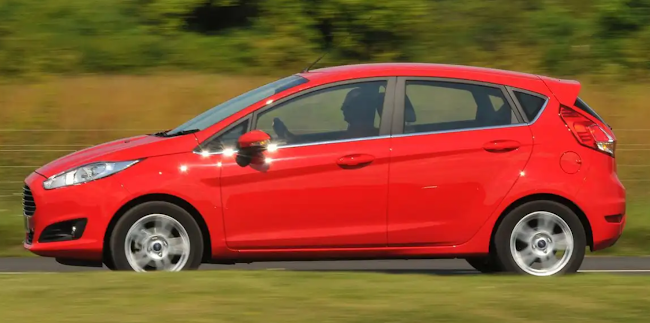BMW 3 Series: History, Buying Tips And More
Essential History
To many, it may seem like the BMW 3 Series has always been with us. It nearly has, getting its start in 1975 as a two-door coupe that replaced the ageing BMW 2002, itself a small, fun-to-drive coupe that both saved the BMW brand and served to bring BMW into the mainstream U.S. market. This first 3 Series was internally coded the E21 and featured designer Paul Bracq's crisp, clean "shark nose" styling. Several styling traits from this series left imprints on future 3 Series models, such as the double kidney grille, a "Hoffmeister Kink" at the base of the C-pillar, twin headlights, and a centre control stack that was angled at the driver.
The second-generation 3 Series (E30) landed in Europe in 1982, and by the end of 1983, the 318i had landed on American shores as a 1984 model, fitted with a 1.8-litre four-cylinder engine with a higher compression ratio and with new Bosch electronic fuel injection. A 2.5-litre, inline six-cylinder variant dubbed 325e arrived shortly after with a detuned version of the Euro-spec engine. In 1987, the 325i brought increased performance, and a host of small improvements continued to update the E30 3 Series until it was cancelled after the 1992 model year. The E30 was available in the U.S. as a two-door coupe and convertible and four-door sedan. It was rear-wheel-drive by default, but the all-wheel-drive was available on the 325ix.
The third-generation E36 3 Series was launched in Europe in 1990 but didn't arrive in U.S. showrooms until 1993 as a 1994 model year car. Again available as a two-door coupe and convertible and four-door sedan, a two-door 318ti hatchback was also briefly added to the lineup, only powered with the base four-cylinder engine.
Six-cylinder versions (first known as 325i, then 328i) continued to top the range. The E36 was significantly larger and more modern than the outgoing E30 and boasted integrated plastic bumpers and an ever-increasing array of options and features until its cancellation at the end of the 1999 model year.
The fourth-generation E46 3 Series joined the U.S. lineup for the 2000 model year and brought with it another thorough updating of the 3 Series formula. With newly rounded edges on the classic three-box design, U.S. models again were found in coupe, convertible, and sedan forms, with some 70 percent greater torsional rigidity than before. Luxury features increased again, as did weight and safety, and by now, U.S. customers were offered only inline-six-cylinder engines, dropping both the four-cylinder engine and the hatchback model. BMW claims the E46 is the top-selling 3 Series of all time with a huge 3,266,885 examples built globally.
In 2006, the fifth-generation 3 Series landed on American shores, and BMW now considered the variants different enough to give them their own internal designation. Sedans were known as E90, wagons (now offered to the U.S. for the first time) were E91, coupes E92, and convertibles E93. Turbocharging technology finally arrived for the fifth-gen cars, and all models were again larger and heavier than those that came before. Six-cylinder gas engines were the volume seller, but a new six-cylinder turbo-diesel was offered for the first time to the American market.
Sixth-generation 3 Series models, having arrived in 2012, diverged even further, with sedans dubbed F30, wagons named F31, and Gran Turismo models snagging the F34 title. All two-door variants were now moved to the 4 Series model name and developed separately from the sedan. Buyers could choose from "Sport" or "Luxury" themed packages and both four- and six-cylinder engines, all turbocharged.
The seventh-generation 3 Series (G20) arrived for 2019 and again offers a single-turbo four- or six-cylinder engine, with rear-wheel drive standard and all-wheel drive optional. For now, only a sedan variant is available in the U.S., and it is unclear if a wagon will be forthcoming.
BMW 3 Series Highlights
Enthusiasts gravitate to the M variants of the 3 Series timeline. The E30 M3 was the first M3 produced and was a true homologation special, with a high-strung four-cylinder engine, box-flared fenders, and a high-profile rear wing. E36 M3s moved to a six-cylinder engine for more power, but were less focused and looked more like a standard 3 Series. A two-door convertible and four-door variant were also available for the first time in the U.S. The E46 M3 kept a straight-six engine up front but was offered as a coupe or convertible only. Visually, it was differentiated by grilles in the front fenders that paid homage to the old 3.0 CSL coupes of BMW's past. E90 series M3s got a new eight-cylinder engine and were offered in coupe, convertible, and sedan form. With the sixth-generation 3 Series came the fifth-generation M3, which now was only available as a sedan, in keeping with BMW's new naming convention. Coupe and convertible variants became known as M4. All fifth-generation M3s used a twin-turbocharged straight-six engine. The G20-series M3 has yet to launch but is expected in the U.S. by 2022.
BMW 3 Series Buying Tips
If ever there were a model to take your time buying, it's the BMW 3 Series for sale - due to generally strong build quality and the huge amounts of 3 Series models sold through the years, there are usually plenty of examples on the market, no matter which generation fries your schnitzel. Generally speaking, clean examples of early generations will be more difficult to find, and you'll pay a hefty premium for anything out of the BMW Motorsport department. Be patient and buy the best BMW 3 Series for sale your budget can tolerate; if you spend more money now, you'll spend less on upkeep later.
Article sourced from https://www.motortrend.com/



Comments
Post a Comment